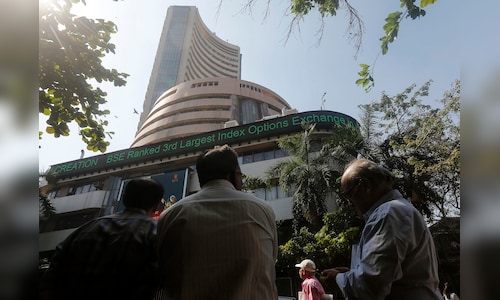
We studied the annual returns of the benchmark BSE-Sensex index for the past 26 years and the findings are interesting, to say the least. Here goes.
MARKET SWINGS & RETURNS
Over the past 26 years, the Sensex has delivered positive returns in 19 years and negative returns in seven years.
In the positive return years, seven years have seen below-average returns. That makes it 14 years of below-average returns in the 26 years, that’s 54% of the time.
Keeping this in context, the nearly 25% return delivered in the fiscal year ended March 2024 and the 68% returned in FY21 post-Covid are clearly in the 46% period and it would not be fair to expect such outsized returns every year.
But let’s also run through some of the findings.
The average yearly return for the Sensex over the past 26 years has been 16.4%. On a compounded basis, the Sensex has returned 12.5% a year. That is a very healthy return and is the kind of return expectation equity investors should work with.
Remember, what goes up must come down, though not all the way. And the law of averages finally tends to catch up. It isn’t rational to expect supernormal returns year after year.
So, while the Sensex has been on a secular long-term trend, there have been swings along the way in years and within years.
THE VALUATION PICTURE
Our study revealed that valuations tend to sway with swings in earnings and external developments.
For instance, valuations swelled when earnings were hit by COVID. The PE of Sensex stocks leapt to near 30x at the end of FY22, but the Sensex is up 35% since then as earnings caught up.
Hence, valuations must always be looked at in the context of earnings and other developments. That said, there is some merit in looking at valuations over time.
For the Sensex over the past 26 years, the PE multiple has ranged between 13x and 30x. The price-to-book value (P/BV) has ranged from 2.2x to 5.5x.
While these are wide ranges, the average PE and P/BV of the Sensex have been 20.8x and 3.3x. This compares with the current readings of 23.9x and 3.9x. So, Sensex stocks aren’t particularly cheap from a historical perspective.
Even if we look at a more recent period spanning the past 10 years, which includes the high PE COVID years, the average PE works out to 24.3x. That is a tad higher than the current level.
But if we look at the P/BV for the same period, it is at 3.2x a tad lower than the current 3.3x. So, stocks aren’t particularly cheap even after the recent fall.
And, if you factor in earnings downgrades and a change in outlook to slower growth, there could still be some room for a correction in valuations.
|
SENSEX – Returns & Valuation
|
||
| Metric | Average | Current |
| Yearly Return |
16.4
|
7.4
|
| 26 Year CAGR |
12.5
|
|
| PE |
20.8x
|
23.88x
|
| P/BV |
3.3x
|
3.94x
|
| Dividend Yield |
1.4
|
1.15
|
THE INVESTMENT MANTRA
While buying low and selling high isn’t always the easiest mantra to execute in the stock market, it pays to track valuations versus historical averages when making an investment decision.
Buying at below-average valuations and selling at above-average valuations is a strategy that can work well.
Happy investing!



